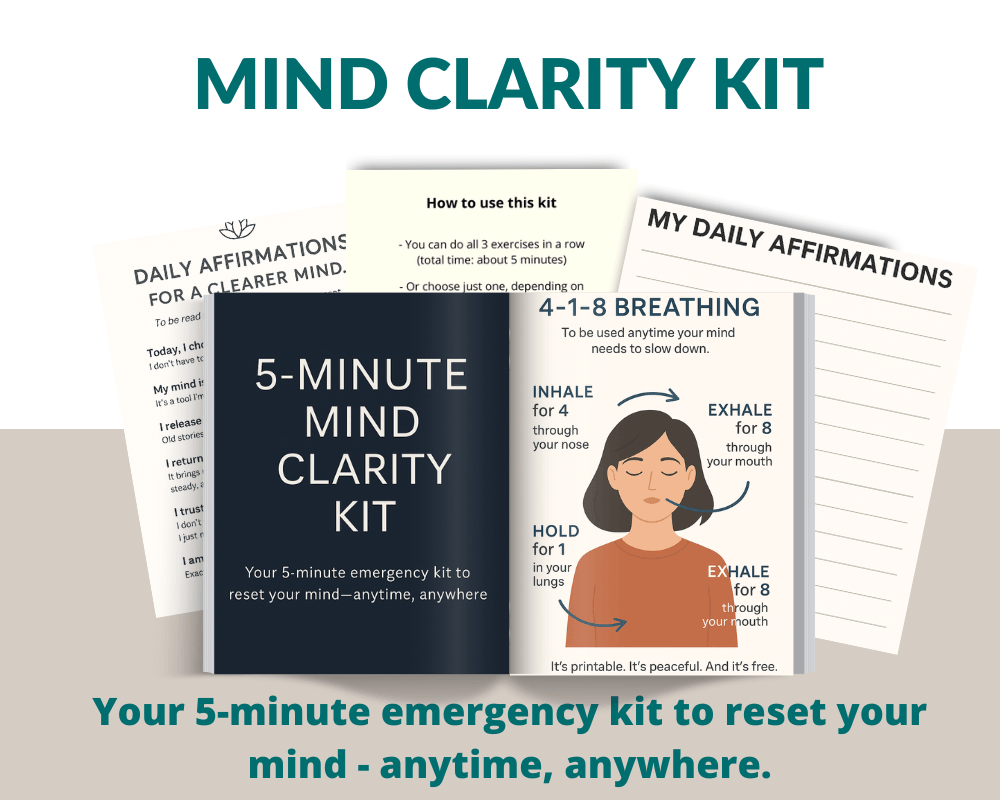
How Mindfulness Can Reduce Anxiety
Imagine this: You’re lying in bed, staring at the ceiling.
Your mind races with thoughts of everything that could go wrong tomorrow.
Did you forget something important at work?
What if you embarrass yourself in that big meeting?
What if something unexpected ruins your entire day?
Your heart pounds, your breath feels shallow, and sleep seems impossible.
Sound familiar? You’re not alone.
Anxiety affects millions of people every day, trapping them in an endless cycle of stress and worry.
It can feel like carrying a heavy backpack full of worries—one that never lightens, no matter how hard you try to ignore it.
But what if there was a way to quiet that noise?
What if you could reclaim control and find a sense of peace even in the chaos?
That’s where mindfulness comes in.
What is Mindfulness?
Mindfulness is the practice of being fully present in the moment without judgment.
It’s about shifting your focus from the endless “what-ifs” of the future or the regrets of the past to the now.
Rooted in ancient meditation techniques, mindfulness has gained significant attention in modern psychology for its ability to reduce stress and promote emotional balance.
By training your mind to focus on the present, you can prevent it from getting caught up in negative thought patterns that fuel anxiety.
Studies have shown that mindfulness can lead to lower levels of stress hormones, improved emotional regulation, and even changes in brain activity that support a calmer, more resilient mindset.
How Mindfulness Helps Reduce Anxiety
1. Breaking the Cycle of Overthinking
One of the biggest triggers of anxiety is overthinking.
Your brain loops through the same worries repeatedly, making them seem even more overwhelming.
These thoughts often create a spiral effect, where one worry leads to another, making it difficult to focus or relax.
Mindfulness interrupts this cycle by anchoring your attention to the present moment.
A simple but effective technique is to focus on your breath.
Each inhale and exhale brings you back to now, away from the anxious thoughts that threaten to take over.
By practicing mindful breathing for just a few minutes a day, you can train your mind to step away from overthinking and into a state of calm awareness.
2. Activating the Relaxation Response
When anxiety takes hold, your body goes into fight-or-flight mode, releasing stress hormones like cortisol and adrenaline.
This response is useful in true danger, but when triggered by daily worries, it can lead to chronic stress, muscle tension, and even physical health issues.
Mindfulness counteracts this response by activating the parasympathetic nervous system—the part of your body responsible for relaxation.
Research has shown that regular mindfulness practice can lead to lower blood pressure, reduced heart rate, and a greater sense of overall calm.
By bringing awareness to your breath, body, and surroundings, you send a signal to your nervous system that it’s safe to relax, reducing the physiological symptoms of anxiety.
3. Shifting Perspective on Anxiety
Rather than fighting anxiety, mindfulness teaches you to observe it without judgment.
Instead of thinking, I am anxious, shift to I am noticing anxiety.
Small change creates a sense of separation between you and your emotions, making them feel less overwhelming.
Imagine anxiety as a passing storm.
Instead of getting caught in the downpour, mindfulness allows you to take a step back and watch the storm from a distance.
You recognize that emotions are temporary and that they will pass.
This shift in perspective helps to reduce the intensity of anxious feelings and makes them easier to manage.
4. Enhancing Emotional Regulation
When you practice mindfulness, you become more aware of your emotions without being consumed by them.
Instead of reacting impulsively to stressors, you learn to pause, observe, and respond thoughtfully.
This prevents anxiety from spiraling out of control and allows you to approach challenges with a clearer mind.
Scientific research supports the idea that mindfulness strengthens the brain’s prefrontal cortex—the area responsible for rational thinking and emotional regulation.
This means that the more you practice mindfulness, the better equipped you become at managing stress, staying calm under pressure, and making decisions from a place of clarity rather than fear.
Simple Mindfulness Exercises for Anxiety Relief
If you're new to mindfulness, start with these simple techniques:
- 5-4-3-2-1 Grounding Technique: This exercise helps anchor you in the present by engaging your senses. Identify 5 things you see, 4 things you touch, 3 things you hear, 2 things you smell, and 1 thing you taste. This practice can be especially helpful during moments of heightened anxiety, as it shifts your focus away from worries and into the physical world.
- Box Breathing: A simple but effective breathing exercise to calm the nervous system. Inhale for 4 seconds, hold for 4 seconds, exhale for 4 seconds, hold for 4 seconds. Repeat this cycle several times, paying attention to each breath. Box breathing is often used by athletes and military personnel to stay focused and composed under pressure.
- Mindful Walking: Instead of rushing through your daily routine, take a few minutes to walk slowly and attentively. Focus on the sensation of your feet touching the ground, the rhythm of your steps, and the feeling of the air against your skin. This practice helps cultivate awareness and brings a sense of grounding, reducing feelings of restlessness and tension.
🧠 Ready to Calm the Chaos in Your Head?
Your brain wasn’t built to run nonstop.
But modern life? It’s like leaving 100 apps open all day.
That’s why I created the 5-Minute Mind Clarity Kit:
a simple, science-based tool to help you clear your mental tabs—anytime, anywhere.
Inside, you'll find:
✔️ A calming breathing technique (takes 60 seconds)
✔️ A 1-minute journaling hack to offload mental noise
✔️ An affirmations exercise that works like a brain refresh button
🎁 It’s free. It’s fast. And it works.
👉 Download the Kit Now — your mind will thank you later.

info@positivemindsetjourney.com
Made with ❤ by Amara Lane © systeme.io
